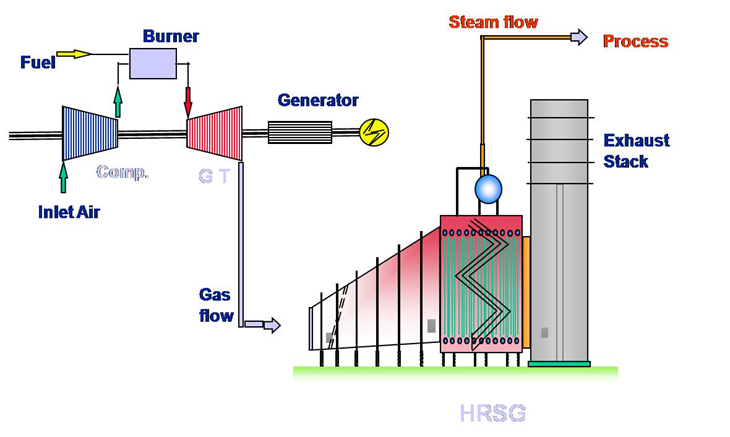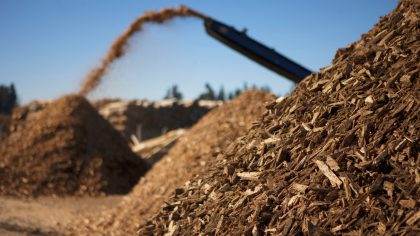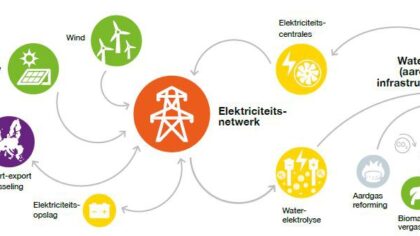In the industry, CHPs are primarily deployed to provide the steam necessary for industrial processes (Energy Matters, 2015). This factsheet provides techno-economic data (costs and energy inputs and outputs) on gas turbines with heat recovery steam generators, although technical dimensions applied to the industry sector cover both GT and CCGT. Techno-economic data for CCGT can be consulted in Niessink (2019).
The two main types of turbines used in gas turbine CHPs are aeroderivatives and heavy duty turbines. Aeroderivatives are derived from the airplane industry and provide up to 50MWe. They heat up relatively fast (15-45 minutes) and operate with 2-3 axes. Heavy Duties are especially designed for heavy industry, with capacities up to 150MWe, high reliability and long lifetimes. This type takes up to 1,5 hour to heat up and is less flexible in steam volume as it has only one turbine. It need s 60% of its full-load to function as a minimum (Energy Matters, 2015). According to CBS (2020) data, gas turbine CHP are deployed in all type of industries. CCGTs are mainly used in the chemical industry. Gas turbines are most common in chemical industry and refineries (CBS, 2020).
The advantages of GT-CHPs over other types of CHP are high reliability, low emissions and the ability to produce high grade heat. Disadvantages include the required high pressure of input gas, and poor efficiency at low loading (US EPA CHP Partnership, 2017).
A typical industrial CHP application for gas turbines is a chemical plant with a 25MW simple cycle gas turbine supplying base-load power to the plant with an unfired heat recovery system generator (HRSG) on the exhaust. This gas turbine CHP system will produce approximately 29MW thermal (MWth) of steam for process use within the plant.
All information in the datasheets is also available in ESDL (Energy System Description Language). You can find them in the Energy Data Repository (EDR).



